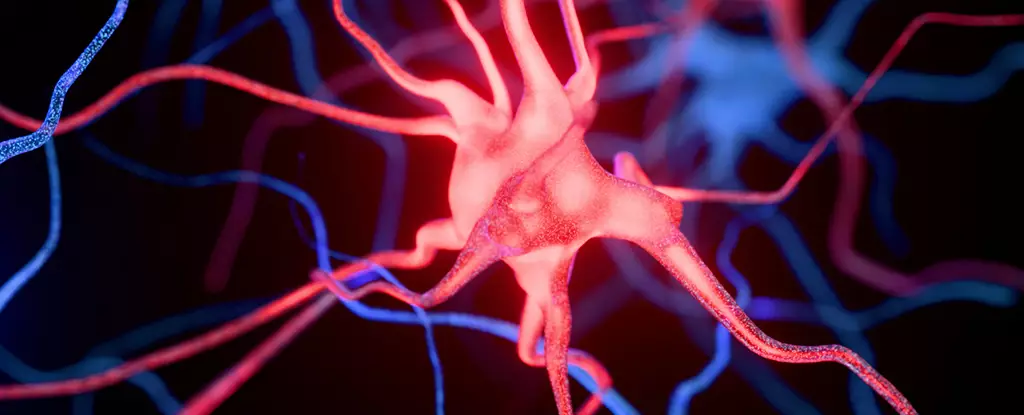In an age where environmental pollution is omnipresent, microplastics have become an insidious component of everyday life. These tiny particles, often invisible to the naked eye, infiltrate our food, water, and air, silently permeating the ecosystems we depend on. Recent scientific findings suggest that microplastics might do far more than pollute the environment—they could actively undermine our neurological health, especially among those already vulnerable due to genetic predispositions. This revelation demands a critical assessment of our current lifestyle and policy choices, as we face a compound threat that could exacerbate neurodegenerative diseases like Alzheimer’s.
The study conducted on mice at the University of Rhode Island provides sobering evidence that microplastics may act as catalysts for cognitive decline, particularly in individuals carrying specific genetic markers such as the APOE4 gene variant. While genetics set a baseline risk, environmental toxins like microplastics could tip the scales, pushing some individuals closer to the brink of irreversible brain decline. This intersection of biology and environment underscores the urgent necessity for society to reevaluate notions of safety, exposure, and responsibility in combating neurodegeneration.
Genetics, Environment, and the Complex Dance Toward Dementia
The interplay between genetic predisposition and environmental factors remains one of the most intricate puzzles in understanding diseases like Alzheimer’s. The research demonstrates that while the APOE4 gene variant significantly increases the likelihood of developing cognitive problems, it is not a definitive sentence—many carriers remain unaffected. However, when environmental toxins like microplastics are introduced, the risk appears to escalate notably.
Microplastics’ potential to penetrate biological barriers and reach brain tissue raises profound concerns about the trophic relationship between pollution and human health. The mice exposed to microplastics exhibited behavioral changes consistent with early signs of cognitive impairment, ranging from apathy in males to memory issues in females—mirroring clinical observations in human patients. These sex-dependent differences highlight the multifaceted nature of environmental impacts, suggesting that biological sex and hormonal factors may influence susceptibility.
The study’s implication that microplastic exposure might exacerbate the effects of genetic risk factors demands a paradigm shift in how we approach neurodegenerative prevention. Instead of solely focusing on genetic screening and pharmaceutical solutions, there is an urgent need to confront and reduce environmental risks. Microplastics, though invisible, represent an invisible toxin capable of aggravating existing vulnerabilities, thereby widening health disparities across populations.
The Societal Cost of Ignoring Pollution’s Role in Cognitive Decline
In contemporary society, environmental neglect often takes a backseat to economic growth and convenience. Microplastics are lauded for their convenience and durability, yet their long-term biological consequences remain grossly underestimated. The evidence suggesting that these particles could accelerate cognitive decline especially in genetically predisposed individuals should act as a wake-up call for policymakers and public health officials alike.
The potential for microplastics to induce inflammation and neurodegenerative processes in animal models raises alarming questions about their effect on human brains. If a simple environmental factor can mimic early Alzheimer’s markers in mice within a short period, what might prolonged exposure do to humans over decades? It’s a risk that we must not ignore—especially when vulnerable groups, such as the elderly or those with high genetic risk, are most likely to pay the price.
This scenario underscores a profound societal failure: prioritizing plastic proliferation and environmental dumping over the health and safety of future generations. While the scientific community continues to unravel the precise mechanisms by which microplastics affect the brain, it is clear enough that immediate action is necessary. Public awareness campaigns, stricter regulation of pollutants, and a shift towards sustainable materials are no longer optional—they are critical steps to prevent an impending neurological crisis rooted in environmental negligence.
As we stand at this crossroads, the message is unequivocal: the environment and our brains are inextricably linked. To ignore this connection is to gamble with our collective future, allowing a toxic, invisible enemy to undermine the very foundation of our cognitive well-being. If society refuses to prioritize environmental health, future generations will inherit a world where neurodegenerative diseases are not just an individual tragedy, but a widespread, preventable catastrophe.


Leave a Reply